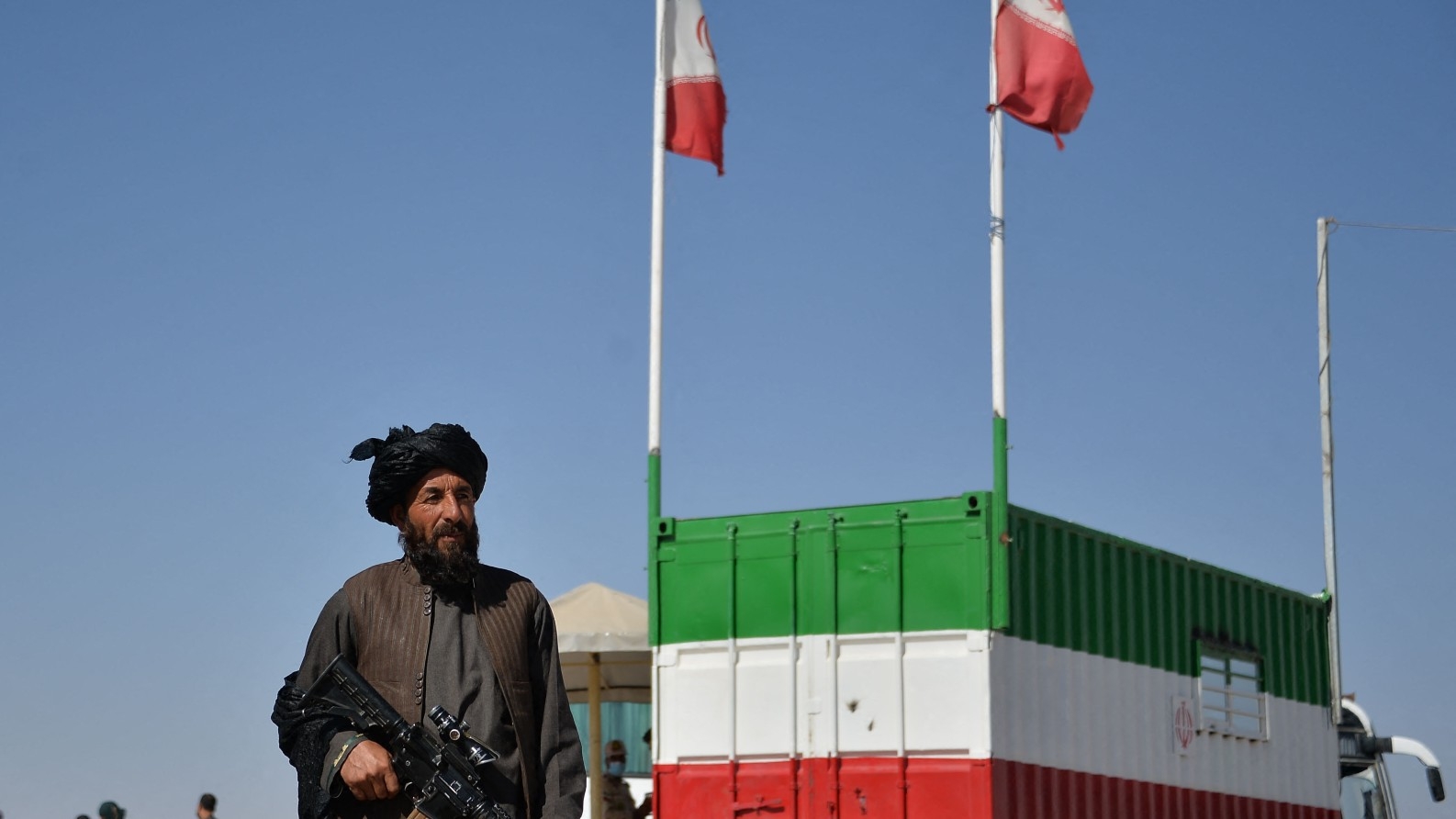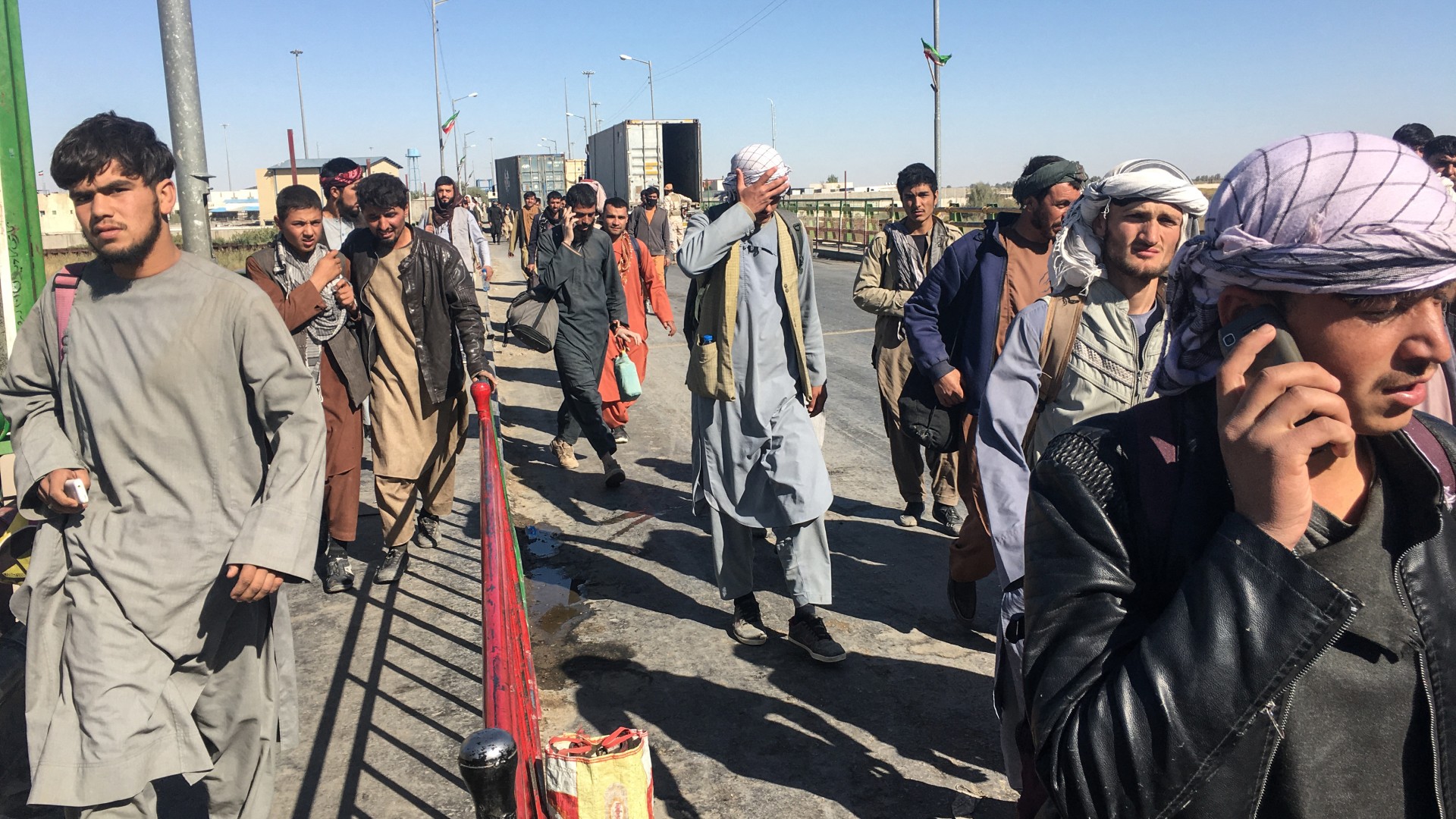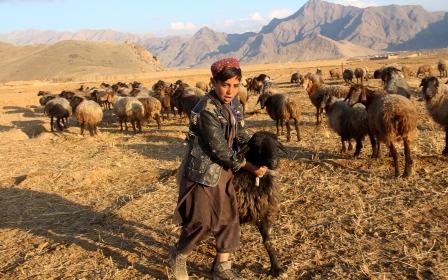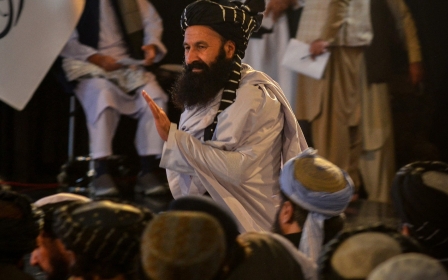For Tehran, Afghanistan is a problem not an opportunity

Last year when the Taliban seized Kabul, Iran did not oppose the move and even seemed to welcome the departure of US forces.
Although the two grew closer in recent years, Iran and the Taliban have a history of enmity
President Ebrahim Raisi said that Washington’s defeat and withdrawal from Afghanistan provided “an opportunity to restore life, security and durable peace”. While western countries, along with Saudi Arabia, the UAE and India, quickly abandoned their diplomatic missions in Afghanistan, Iran kept its embassy in Kabul and consulate in Herat open as the Taliban seized power.
But, far from improving relations between Iran and Afghanistan, the Taliban takeover has exacerbated longstanding tensions pertaining to drugs, water, and refugees, while jeopardising trade and creating new problems along their long land border.
Although the two grew closer in recent years, Iran and the Taliban have a history of enmity, almost going to war in 1998 after militants killed several Iranian diplomats in Mazar-i Sharif.
A 'hedging strategy'
New MEE newsletter: Jerusalem Dispatch
Sign up to get the latest insights and analysis on Israel-Palestine, alongside Turkey Unpacked and other MEE newsletters
In the late 1990s, Tehran joined Moscow, Delhi and Beijing in supporting the anti-Taliban resistance led by Ahmad Shah Massoud and even provided intelligence support for the US invasion of Afghanistan in 2001.
Iran subsequently formed close relations with the new Afghan government, which included some of the Afghan Tajiks it had supported in the 1990s. Former president Hamid Karzai received bags of cash from Tehran.
But things soon changed. Iran grew increasingly uncomfortable with American troops on its eastern flank, especially as the US had invaded and occupied its western neighbour, Iraq, and threatened Tehran with a similar regime-change operation.
Eager to hasten the withdrawal of Nato forces from Afghanistan and aware that the Taliban was resurging and might eventually return to power, Iran shifted its Afghan policy around 2007 and adopted a hedging strategy.
This entailed backing the Taliban with shelter and military support, while maintaining its ties with the Afghan government in Kabul. The insurgents reportedly opened an office in Mashhad and moved some of their family members to the country.
A rapprochement with Tehran suited the Taliban well, enabling them to reduce their dependence on Pakistan and find alternative sources of funding and sanctuary should Islamabad succumb to American pressure to dial back its assistance.
When the US finally decided to negotiate with the Taliban and pursue a diplomatic solution under the Trump administration, Iran’s relationship with the militants came out of the shadows and their representatives publicly travelled to Tehran for meetings.
'No windfall for Iran'
By improving its ties with the victorious insurgents, Iran seemed to have outdone its Gulf rivals, Saudi Arabia and the UAE, which had backed the former Taliban emirate in the 1990s but severed relations after 9/11 and opposed the group.
Fast forward one year, though, and the Taliban takeover has been no windfall for Iran. Tehran has not yet recognised the new regime, reflecting its displeasure with the movement’s policies.
If the Taliban’s grip on power weakens, Iran will want to get behind the winning horse
For example, the Taliban’s cabinet largely excludes minorities, and Iran has consistently advocated for an inclusive government that represents Afghanistan’s ethnic and religious groups, such as the Tajiks and Shiite Hazara that it has supported in the past.
In January, the Iranian government tried to broker peace talks between the Taliban and the Tajik-dominated National Resistance Front (NRF) led by Ahmad Massoud, son of the legendary fighter Iran had backed in the 1990s, but those efforts failed.
Tehran seems to be supporting the NRF in a limited fashion. Massoud is reportedly close to senior figures in the Iranian leadership, including Qods Force commander Esmail Qaani, and his group is said to receive funding from the government.
In backing Massoud, Iran is continuing its old hedging strategy in Afghanistan. The Taliban has so far not proven to be a reliable partner for Tehran, so it makes sense to keep another option in its back pocket.
For now there is little appetite in any foreign capital to patronise Massoud and foment resistance against the regime, given the chaos that might ensue. But if the Taliban’s grip on power weakens, Iran will want to get behind the winning horse.
Tehran’s ties to the NRF are about more than Afghan politics, though. They are also a consequence of popular feeling in Iran, which is strongly supportive of Massoud and his late father.
Key issues
The Iranian government is engaging with the Taliban out of necessity. Whatever might be wrong with the new Afghan regime, it shares Iran’s hostility to the Islamic State group and can help counter the terror threat.
However, in many other respects the Taliban "emirate" has been detrimental to Tehran’s interests. Take water, for instance. For years Iran has accused Afghanistan of violating its rights by failing to honour a 1973 water-sharing treaty. Tehran slammed the previous Afghan government for building dams along the Helmand River.
These problems have persisted under the Taliban, with Iranian protesters even attacking Afghan trucks earlier this year due to the alleged lack of water.
Then there is the issue of drug trafficking. Again, this is not a new problem: narcotics production boomed in Afghanistan during the US-led war. But it has continued under the Taliban, with large seizures of heroin and methamphetamine in Iran so far this year.
And, last but not least, there is the problem of refugees. Under the Taliban the economy collapsed amid sanctions and the removal of foreign aid (most of the previous government’s budget), causing Afghans to flee the country in large numbers.
Many have headed for Iran, which already hosts about 3.5 million Afghans. For years Iran deported huge numbers, and 2022 has so far been no exception, with 460,000 returned in the first half of the year, an increase of 42,000 on 2021, and far more than Pakistan’s 46,000.
Afghan refugees are not popular in Iran and have for a long time been subject to abuse and discrimination. This xenophobia rose to the surface in April when a man who was initially believed to be Afghan stabbed three clerics in the city of Mashhad.
He later turned out to be Uzbek, but his supposed Afghan nationality led to calls for all Afghans to be expelled from Iran. They are already a marginalised group, and have allegedly been conscripted to fight in Syria as part of Iran’s Fatemiyoun Brigade.
Almost a hundred Afghans were shot at the Iranian border in the first six months after the takeover. Iran’s harsh behaviour has stirred controversy in Afghanistan. Soon after the stabbing in Mashhad protests erupted outside the Iranian consulate in Herat.
Increased tensions
Tensions along the land border have escalated dramatically this year, as Taliban fighters regularly clash with Iranian guards, a phenomenon not seen to such a degree under the previous Afghan government.
Trade has also suffered under the Taliban. The previous Afghan government managed to improve economic ties with Iran. In 2016 the two signed an agreement with India to route goods through Iran’s Chabahar Port, bypassing Pakistani territory.
By 2020, Iran accounted for about 70 percent of Afghanistan’s transit trade and had risen to surpass Pakistan as the country’s top trading partner. But it has now fallen back to second place, in large part due to a sharp drop in fuel imports.
On the plus side, there is hope for an international consensus on Afghan issues. Iran’s wariness of the Taliban is shared by other regional countries, such as China, which is clearly dismayed by the group’s policies and has also declined to recognise the regime.
This common ground means a coordinated multilateral approach is possible, especially because Iran’s interests in Afghanistan also overlap with those of the US and western countries when it comes to terrorism, drugs, refugees, and even inclusive governance.
But the situation is bleak. The Taliban takeover has ushered in a tense period for Iran-Afghan relations where prosperity and harmony will be hard to come by. For Tehran, as for Beijing and others, Afghanistan is a problem to be managed, not an opportunity to exploit.
The views expressed in this article belong to the author and do not necessarily reflect the editorial policy of Middle East Eye.
Middle East Eye delivers independent and unrivalled coverage and analysis of the Middle East, North Africa and beyond. To learn more about republishing this content and the associated fees, please fill out this form. More about MEE can be found here.








